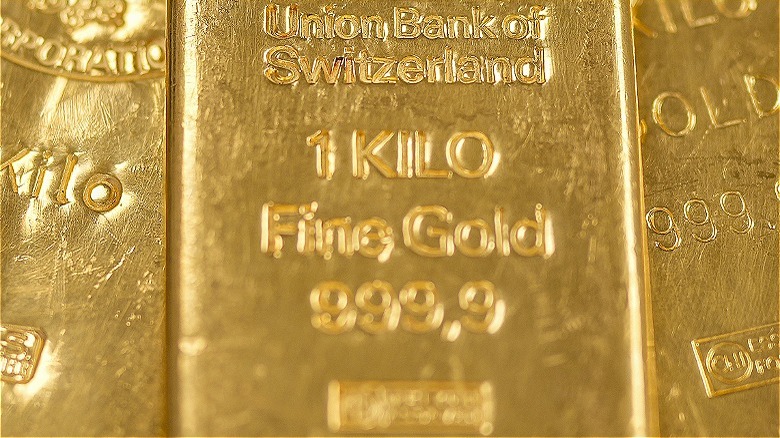The Ultimate Guide To Investing In Gold
The landscape of gold investments is complicated, to say the least. At the same time, there's nothing inherently difficult to understand about purchasing physical gold assets and holding onto them securely. The gold market is therefore equal parts mercurial and transparent, an intriguing and perhaps surprisingly deep commodity space.
Investing in the gold market can be as simple as purchasing bullion online or in a brick and mortar retail setting. But once you've taken possession of a new gold purchase, the demanding part comes into play. Unlike stocks or even real estate in some cases, gold owners have to actually participate in the direct management and maintenance of their investment. Similar to cash or bearer bonds, there isn't a great paper trail created during the procurement of gold assets. If you lose your bullion or are a victim of theft, it can be immensely difficult to reclaim the asset.
Stocks and other investments, on the other hand, are registered and therefore much harder to simply take. This shouldn't dissuade investors from dabbling in gold if they have their heart set on the asset, though. Gold is a highly valuable hedge against inflation — making it a smart way to buffer your savings against one of America's top wealth killers. It's also a far more versatile investment option than just the bullion market, allowing anyone to consider it for their investments or retirement savings in one way or another.
Gold can help defend you from inflation
First and foremost, gold investments perform best when utilized as a long-term solution. Historically, gold prices have showcased an inverse correlation with the strength of the dollar. Similarly, bond yields appear to move in inverse correlation with gold prices while the stock market doesn't correlate strongly at all. These features make gold both an asset class that isn't tied to your stock market investments and one that provides a hedge against rising inflation rates. During times of economic stress, gold prices tend to rise and can make for a valuable asset to sell in order to take advantage of a weak dollar or underperforming assets in other classes.
Of course, in order to reap this reward fully, you'll need to commit to a gold-buying strategy that likely takes place during times of muted asset appreciation. Stock market performance may or may not be returning solid growth, making the choice to commit to gold investments a mixed bag when it comes to considering opportunity cost. Regardless, because gold is famously no longer backing the value of a dollar (after the Bretton Woods system came to an end in 1971), its pricing moves independently of America's fiat currency. Historically, since 1971, gold assets have seen an annualized return of 7.98%, outpacing the negative pressure of inflation.
Physical assets are perhaps best
Gold investors are likely to think primarily of physical assets when considering an entry into this marketplace. Gold bullion (bars, rounds, and other lump-weighted gold assets) and coins are some of the most recognizable investment commodities in any category, and, therefore, often get the most attention in the world of gold. It's not only the shimmer that attracts investors, though; physical gold doesn't rely on an internet connection, a broker's opening hours, or anyone else's whims to own and manage. Maintaining something of value in the physical world remains a uniquely versatile feature and offers an immense volume of control over the financial tool.
But owning physical gold assets comes with a number of added considerations. Firstly, gold assets must be stored securely. Your gold bars aren't stamped with your name, so a weakness in your ability to securely store them can result in a loss of the commodity with much greater ease than many other investments. Buyers might consider a safe deposit box in their local bank branch, but access becomes hindered by opening hours via this method. A safe at home is another great option, but if you're keeping a large reserve of gold at your property, you'll likely want to avoid discussing it with others to further preserve its security. Physical gold collectors will also want to search for local vendors in their area, as selling assets locally takes some of the hassle and insecurity out of mailing gold coins or bullion to a dealer.
Gold-tracking ETFs make investment simple
Bullion isn't the only choice for eager gold investors. Indeed, a variety of alternatives can be leveraged to support your efforts in the space without having to buy a safe or invest in a safe deposit box at your local bank. One of the easiest avenues that gold investors pursue as an alternative to physical commodities lies in the ETF market. Gold-tracking ETFs trade on the open market in the same way that regular company stocks and other exchange-traded funds are bought and sold. Buying into gold as an inflation hedge has become as simple as submitting a routine buy order.
This strategy eliminates any stress over managing the security of an investment in gold. You won't need to try and hide its existence, install added security features at home, or pay someone else monthly to store your assets. Gold ETFs are also far more liquid than physical commodities. Selling shares in one of these funds is exactly as simple as any other stock market sale. The only downside here is that an ETF won't typically offer the same level of value appreciation that a physical commodity enjoys over the long term. This is a tradeoff that many investors consider negligible, however, when faced with the added requirements of possessing the real deal.
Gold dealers can secure assets for you
It's also possible to blend these two worlds together. Modern gold buyers can purchase physical assets without having to worry about securing them. Some of the largest online bullion sellers, like JM Bullion and APMEX, sport partnerships with storage facilitators that will care for your purchases without ever requiring a buyer to handle or otherwise actively manage their investment. Vault providers have cropped up across the market and offer a secure way to combine the physical ownership of gold assets that many buyers are looking for without having to invest in tertiary security and other systems and procedures.
Gold stored with a secure vault provider can be purchased via one of these (or many other) online marketplaces, and then shipped directly to the secure facility rather than your home or office. As well, it's always possible to have your holdings transferred to your own management if that becomes something you'd prefer. Vaulting services are particularly valuable for investors who will be purchasing a sizable volume of physical gold since a natural correlation exists between total portfolio vulnerability and the size of your holdings.
Investing on a larger scale may also be effective
Gold segment investments don't have to just revolve around the physical commodity. Investors sometimes opt to purchase jewelry instead of bullion. Jewelry doesn't enjoy the same level of asset appreciation, but it can be a fun way to get into the space. Alternatively, some investors might tailor their investments toward businesses that operate in the gold marketplace. Mining companies, for instance, can produce exposure to the commodity while remaining firmly within the traditional stock market world.
Firms in the industry provide a sort of dabbling exposure that won't generally see the full weight of value spikes, but this may also defend your investment portfolio against a downturn in the commodity's pricing. Technology brands and jewelry producers also work with the precious metal, and those in the industrial transportation market might function as key cogs in the supply chain — from earth to neck (wrist, hand, or ears) or microchip. Researching companies that work firmly within or around the fringes of the global gold marketplace can make for a fascinating deep dive into the commodity itself while offering limited risk exposure during potential periods of bearish trading.





